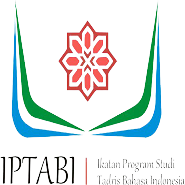PEMEROLEHAN BAHASA PADA ANAK DENGAN RIWAYAT PERILAKU TANTRUM: ANALISIS PERKEMBANGAN KOSAKATA DAN KEMAMPUAN KOMUNIKASI
DOI:
https://doi.org/10.15575/jelli.v1i1.209Keywords:
Language Acquisition, Tantrums, Vocabulary DevelopmentAbstract
This study aims to determine language acquisition in children aged 3 years with emotional disorders (tantrums) with a focus on the development of their vocabulary and communication skills. The research method uses a qualitative descriptive method, namely by examining the status of human groups, objects, conditions, systems of thought or current events with the aim of making systematic, factual, and accurate descriptions of the facts studied. The data obtained in this study through interviews, observation, and documentation, so as to get answers to problems in detail. The research subjects were 3 year old children with emotional disturbances (tantrums). The results of this study indicate that the acquisition of language experienced by children aged 3 years with emotional disorders (tantrums) can be qualified by the function of expressing something, desire, form of rejection, and acceptance. In children aged 3 years who experience tantrums, language acquisition and use are still developing to achieve perfection. Parents and the surrounding environment play a very important role in guiding and always providing input to achieve perfection in language acquisition.
References
Chaer, A. (2009). Psikolinguistik Kajian Teoritik. Rineka Cipta.
Dardjowidjojo, S. (2003). Psikolinguistik. Yayasan Obor Indonesia.
Gleason, J. B., & Ratner, N. B. (1998). Psycholinguistics (Second Edition). California. Wadsworth/Thomson Learning.
Isna, A. (2019). Perkembangan Bahasa Anak Usia Dini. 2(2).
Kushartanti, Yuwono, U., & Lauder, M. R. M. T. (2008). Pesona Bahasa,Langkah Awal Memahami Linguitik. Gramedia Pustaka Utama.
Nazir, M. (1983). Metode Penelitian. Darussalam: Ghalia Indonesia.
Nuryani, & P Karunia, D. A. (2013). Psikolinguistik. Mazhab Ciputat.
Sujarwanto, & Khofidotur. (2019). Manajemen Pendidikan Anak dengan Gangguan Emosi Perilaku. Media Publidhing.
Sukmadinata, N. S. (2011). Metode Penelitian Pendidikan. PT. Remaja Rosdakarya.
Verhaar. (2001). Asas-asas Linguistik Umum. Gajahmada Press.
Yamin, M., & Sanan, J. S. (2010). Panduan Pendidikan Anak Usia Dini PAUD. Gaung Persada Press.
Arsanti, M. (2014). Pemerolehan Bahasa Pada Anak (Kajian Psikolinguistik). Jurnal PBSI, 3(2).
Mushaitir. (2016). Pemerolehan Sintaksis (B1) Bahasa Sasak pada Anak Usia 4-6 Tahun di Lombok Timur Melalui Permainan Tradisional. Jurnal Pendidikan Bahasa Dan Sastra, 16(1).
Salnita, Y. E., Atmazaki, A., & Abdurrahman, A. (2019). Pemerolehan Bahasa pada Anak Usia 3 Tahun. Jurnal Obsesi: Jurnal Pendidikan Anak Usia Dini, 3(1), 137–145.
Syamsudin, S. (2013). Mengenal perilaku tantrum dan bagaimana mengatasinya. Sosio Informa: Kajian Permasalahan Sosial Dan Usaha Kesejahteraan Sosial, 18(2).
Wulandari, A. (2013). Pelatihan Komunikasi Efektif untuk Meningkatkan Pengetahuan Ibu dalam Mengatasi Tantrum pada Anak Usia Prasekolah. Universitas Indonesia.
Yiw’Wiyouf, R. M. S., Ismanto, A. Y., & Babakal, A. (2017). Hubungan Pola Komunikasi Dengan Kejadian Temper Tantrum Pada Anak Usia Pra Sekolah Di Tk Islamic Center Manado. Jurnal Keperawatan, 5(1).
Downloads
Published
How to Cite
Issue
Section
Citation Check
License
Copyright (c) 2023 Disha Ocktaviana

This work is licensed under a Creative Commons Attribution-ShareAlike 4.0 International License.










